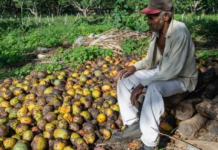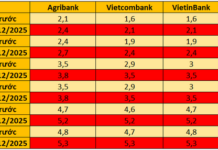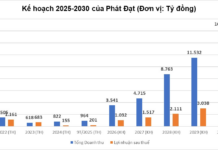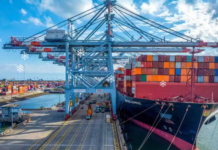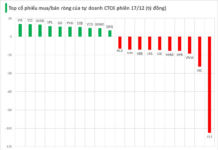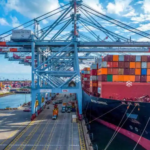On the eve of the “UOB Gateway to ASEAN” conference, on August 28, 2024, Mr. Suan Teck Kin, Director of Market and Global Economics Research at UOB, shared his insights on Vietnam’s economic outlook and monetary policies.
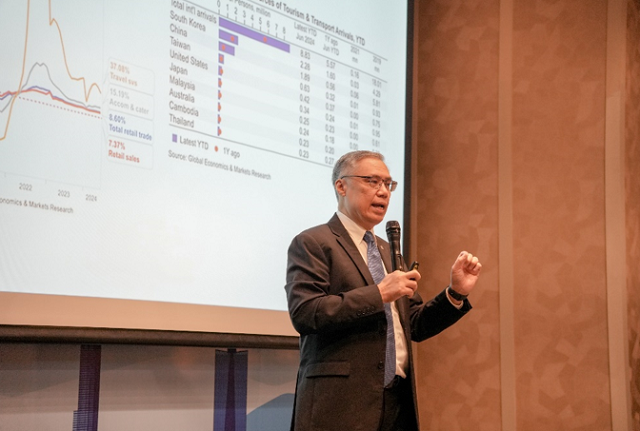
Mr. Suan Teck Kin, Director of Market and Global Economics Research at UOB
|
Vietnam’s economic outlook for 2024 remains positive, with a GDP growth rate of 6.4% in the first half, driven by manufacturing, industrial, and service sectors. Mr. Suan highlighted Vietnam’s increasing exports, especially in electronics and mobile phones. The semiconductor cycle is recovering due to AI advancements and rising demand for electronic devices. Vietnam’s population also contributes to this economic momentum.
The country’s economic prospects for 2024 are optimistic, with a projected GDP growth rate of 6%, which could be surpassed. This optimism is based on the strong performance of sectors such as manufacturing, electronics, furniture, and automobiles. Despite global challenges like high-interest rates and slowing demand in developed markets, Vietnam’s Purchasing Managers’ Index (PMI) stands out as one of the highest in Asia, indicating continuous expansion. The country’s growth potential is promising for both 2024 and 2025, especially compared to the slower growth of 5% in 2023.
Vietnam’s trade activities in 2024 have significantly recovered, especially in exports and imports, surpassing the decline in 2023. Exports, mainly driven by trade with the US and China, are performing well, with the US being Vietnam’s largest export market. In the first seven months of 2024, Vietnam achieved a trade surplus of $58 billion with the US, a significant increase from the $45 billion surplus in the same period in 2023. Despite this positive outlook, there are concerns about Vietnam’s heavy reliance on the US and China for trade, which policymakers should consider in light of ever-evolving global trends.
Vietnam’s trade surplus is largely driven by exports to the US, supporting its local currency and import capacity. However, there are worries about potential risks associated with US-Vietnam trade relations, especially with the upcoming US presidential election and possible actions regarding Vietnam’s significant trade surplus. Additionally, Vietnam’s trade surplus might come under close scrutiny according to the US Treasury’s currency manipulation criteria. To mitigate these risks, Vietnam could diversify its export markets beyond the US and expand into other regions like the Middle East, India, and neighboring Asian countries.
Vietnam’s strength lies in its competitiveness in the electronics and electrical industries, but there is a risk in overly depending on these sectors. To minimize this risk, Vietnam should diversify its exports by expanding traditional industries such as textiles, footwear, wood products, seafood, and agriculture. Notably, agricultural exports like fruits and vegetables increased by 24%, and wood products exports rose by 23% year-on-year in the first seven months of this year. The government can further support these sectors by ensuring available land and providing relevant labor training, helping Vietnam manage risks and maintain diverse growth across various industries.
Vietnam is heavily reliant on foreign trade, with a trade openness ratio of 162% of GDP, making it the third most trade-dependent country in ASEAN. This dependence means that Vietnam benefits significantly during periods of strong global demand but suffers more during global recessions, as seen in 2023. To mitigate this risk, diversification is essential.
Foreign direct investment (FDI) into Vietnam remains robust, with record-high levels for two consecutive years. In just the first seven months of this year, Vietnam attracted $13 billion in realized FDI, with strong investment inflows from Singapore, China, Hong Kong, and Japan. This positive trend reflects investors’ and businesses’ continued confidence in Vietnam’s competitiveness and potential.
The retail sector, which was impacted during the COVID-19 period, has recovered well across various segments, indicating a broader economic rebound.
International tourism in Vietnam has recovered well post-COVID-19, with nearly 10 million arrivals as of July 2024. The main sources of tourists include South Korea, China, Taiwan, and the US. While it may not reach the pre-COVID-19 peak of 18 million arrivals in 2019, the outlook remains positive due to favorable economic conditions, such as low-interest rates and improved consumer sentiment.
Inflation remains a concern, with the latest figure standing at around 4% year-on-year, close to the central bank’s target of 4.5%. Core inflation, excluding food and energy, is declining, but overall inflation is driven by rising food and housing prices. This has limited the central bank’s ability to cut interest rates in the near term. Housing and food prices, in particular, will require government attention to ease inflationary pressures.
Inflation in Vietnam is expected to remain at around 4% until the end of the year due to base effects, which may restrict the State Bank of Vietnam’s (SBV) ability to lower interest rates. The focus will be on managing inflation and supporting the Vietnamese Dong (VND).
As the exchange rate has already weakened, the SBV has reduced pressure on exchange rate management and can maintain interest rates at high levels to address inflationary concerns.
The Vietnamese Dong is forecast to continue appreciating. The VND has started to appreciate more strongly, reaching above 25,000 against the USD. Going forward, the VND is expected to gradually appreciate to 24,100 against the USD by Q2 2025.





